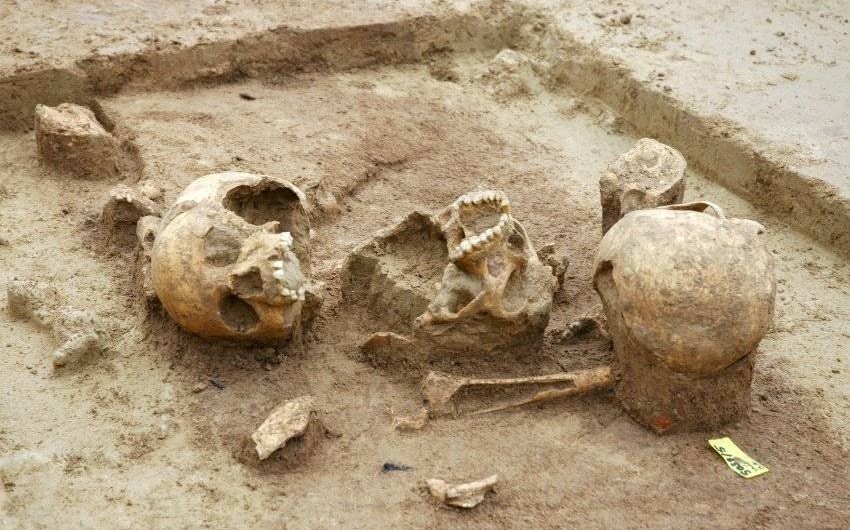Archaeologists have discovered a burial pit with skeletal remains in a cave in Kenya. By age, the find belongs to the Middle Stone Age and is the oldest human burial on the African continent, Report informs referring to Reuters.
Scientists said that they have found the oldest-known human burial in Africa, the continent that gave rise to our species, dating to about 78,000 years ago at a cave site called Panga ya Saidi near the Kenyan coast. They nicknamed the youngster ‘Mtoto,’ meaning ‘child’ in Swahili.
The discovery, the researchers said, sheds light on the development of early complex social behaviors in Homo sapiens.
“This is at the root of the symbolic mind that characterizes Homo sapiens,” said anthropologist María Martinón-Torres, director of the National Research Center on Human Evolution (CENIEH) in Spain and lead author of the study published in the journal Nature.
“The child was buried in a residential site, close to where this community lived, evincing how intimately life and death are related. Only humans treat the dead with the same respect, consideration and even tenderness they treat the living. Even when we die, we continue to be someone for our group,” Martinón-Torres added.
Homo sapiens first appeared in Africa more than 300,000 years ago, later spreading worldwide.
The highly decomposed bones, found in a circular pit, were encased in plaster and eventually taken to CENIEH for study.
The researchers determined that the child, whose gender remains unclear, was placed in the grave in a flexed position, the body lying on its right side, with knees drawn toward the chest.
The cranium and three neck bones collapsed into a void left by the decay of a pillow made of perishable material. The position of a shoulder bone and two ribs indicated the upper body was wrapped in a perishable material. The body was fresh at the time of burial, rapidly covered with earth scooped from the cave’s floor.
“It is certainly very interesting and may be evincing a particular grief or sorrow to such an early loss of someone they loved,” Martinón-Torres said.
It is unclear when funerary behavior began, but ancient Homo sapiens and our Neanderthal cousins both practiced it. Martinón-Torres called it “a type of behavior that allow us to maintain links with those who died and offer a farewell.”


 https://static.report.az/photo/d1ede9a3-35ba-3b3e-82aa-757b26009d63.jpg
https://static.report.az/photo/d1ede9a3-35ba-3b3e-82aa-757b26009d63.jpg

